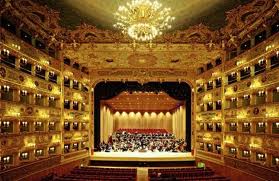Hi friends, today i want to share information about Venice.
Venice is one of the most lovely places in the world. Venice city is situated on the bank of canal in Italy. Venice is famous all over the world for the canals.The most famous is the area comprising the 118 islands in the main districts that are called "Sestieri" and they are: Cannaregio, Castello, Dorsoduro, San Polo, Santa Croce and San Marco, where the main monuments and sights are located. They used to transportation by canals. Gondola is the classical venetian boat which was used as a major source of transport in the olden days. Venice being a place on water. The bridges in the city takes an important place in every visitor's list, such as the Bridge of sighs.The place gets it name from the sighs of the prisoner who were taken to the prison cell from the doge's palace. This bridge connects the doge's palace to the prison cell.
Foundations
The buildings of Venice are constructed on closely spaced wooden piles. Most of these piles are still intact after centuries of submersion. The foundations rest on the piles, and buildings of brick or stone sit above these footings. The piles penetrate a softer layer of sand and mud until they reach a much harder layer of compressed clay.
Submerged by water, in oxygen-poor conditions, wood does not decay as rapidly as on the surface. It is petrified as a result of the constant flow of mineral-rich water around and through it, so that it becomes a stone-like structure.[citation needed]
History of Venetian Masks
In 1162 Doge Vitale Michieli triumphed over Ulrich II of Treven and an annual celebration to commemorate the occasion was commenced. The first documented usage of Venetian masks in conjunction with the annual celebration was in 1268.
As Venice grew in popularity as a tourist destination through the middle ages the city became known as a pleasure palace. During this period the popularity of masks grew as prominent social figures dawned disguises to conceal their identities as they performed unscrupulous and immoral acts in pursuit of carnal pleasures.
During the 16th through 18th century Venetian Masks became the signature of the Commedia Dell'arte. The Commedia Dell'arte were popular plays in the form of improvisational theater that were performed by theater companies that traveled the Italian peninsula producing comedies involving the topics of adultery, jealousy, and love.
Several of Venice's popular mask forms such as the Capitano, the Paglianccio(clown), the Pulcinella (the mascot of Naples), and Zanni (the threadbare old servant of Venice) were shaped in character in the traveling road show known as the Commedia dell'arte.
On October 17, 1797 Venice became part of the Kingdom of the Lombardy-Venetia (Austria). When the Austrians took control of the city masked celebrations were outlawed. :-( Venetian masks faded into obscurity.
The tradition of mask making was not rekindled until 1979 when some undergraduate art students revived the tradition in an effort to profit from the tourism trade in the city. And a successful endeavor it turned out to be. In less than 30 years the artisan profession has flourished and now masks and Venice are synonymous.
The history of the Venetian Mask is nearly as colorful as the masks themselves.





0 comments:
Post a Comment